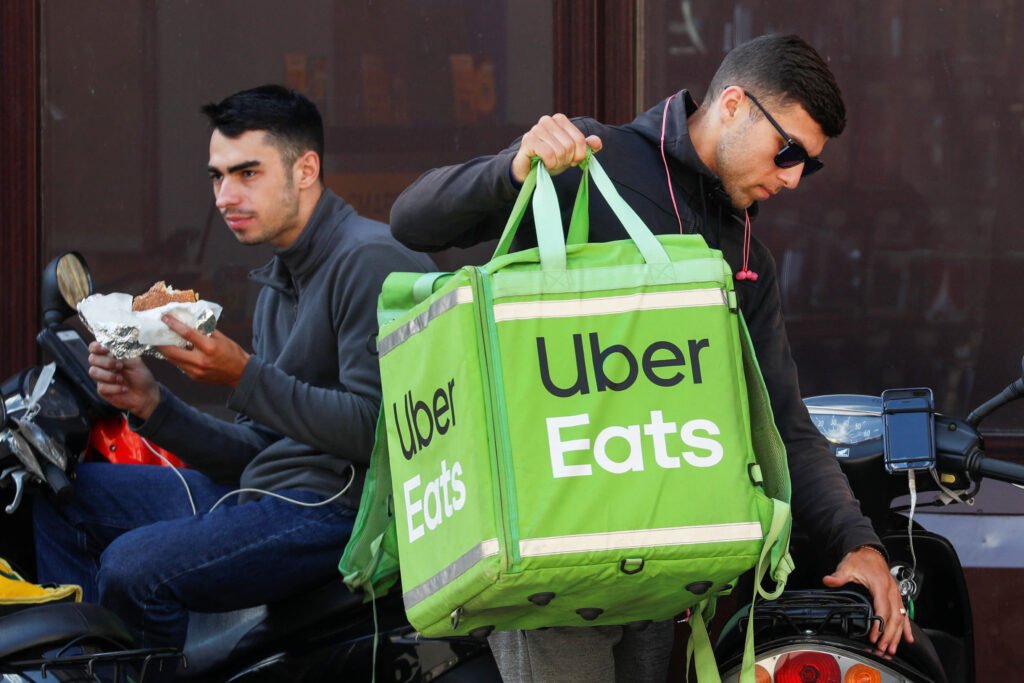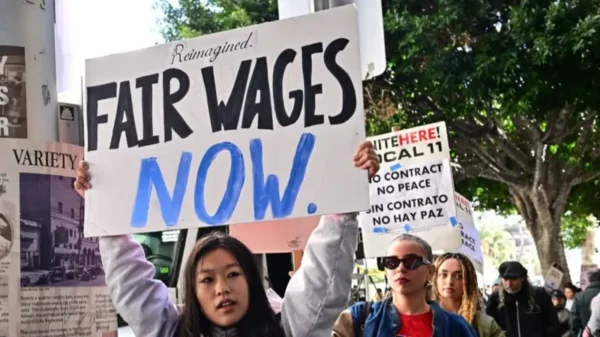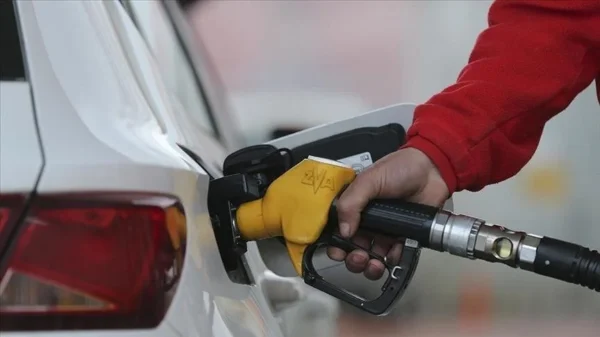From UberEATS to DoorDash: Examining the Key Players in the Food Delivery Industry
Learn about the rapidly growing food delivery industry and its impact on consumers.
KEY TAKEAWAYS
- The food delivery industry has experienced significant growth in recent years.
- Technological advancements, such as mobile apps and GPS tracking, have played a major role in the industry’s expansion.
- Changing consumer preferences, driven by a desire for convenience and variety, have also contributed to the industry’s growth.
- The COVID-19 pandemic further accelerated the demand for food delivery services, with restaurants adopting contactless delivery options.
- Traditional restaurant-based delivery, third-party aggregators, and ghost kitchens/virtual restaurants are different models that have emerged in the food delivery industry.
- Success stories of food delivery startups and their impact on traditional restaurants highlight the industry’s real-world scenarios.
- Challenges include logistics and delivery efficiency, regulatory considerations, and market consolidation.
- The future of the food delivery industry holds opportunities for innovation and continued growth.
In a world where convenience and speed are valued more than ever, the food delivery industry has emerged as a formidable player, revolutionizing the way you enjoy your meals. From the humble beginnings of local pizza joints offering doorstep delivery to the rise of tech-driven platforms delivering a wide array of cuisines, the growth of the food delivery industry has been nothing short of extraordinary. This article delves into the fascinating journey of this booming sector and uncovers the key factors driving its meteoric rise. Technological advancements, changing consumer preferences, and the impact of the COVID-19 pandemic have all played pivotal roles in shaping the trajectory of the industry. The article will also explore the evolution of food delivery models, from traditional restaurant-based delivery to the disruptive emergence of ghost kitchens and virtual restaurants. Furthermore, through real-world scenarios and case studies, more light is shed on the success stories of food delivery startups, the challenges faced by traditional restaurants, and the firsthand experiences of satisfied customers.
Factors Driving the Growth of the Food Delivery Industry
The remarkable growth of the food delivery industry can be attributed to several key factors that have reshaped the way people dine. Technological advancements, changing consumer preferences, and the impact of the COVID-19 pandemic have all played significant roles in driving the expansion of this industry.
- Technological Advancements
- Mobile applications and online platforms: The proliferation of smartphones and the availability of user-friendly mobile applications have made it incredibly convenient for consumers to order food from their favorite restaurants with just a few taps. Online platforms also provide a seamless ordering experience and a wide range of choices, catering to diverse culinary preferences.
- GPS tracking and real-time order updates: Food delivery services have integrated GPS tracking systems into their platforms, allowing customers to track their orders in real time. This transparency enhances the overall customer experience and provides reassurance about the status and estimated arrival time of their meals.
- Integration with digital payment systems: The integration of digital payment systems within food delivery applications has eliminated the hassle of cash transactions, making the process more streamlined and efficient. With options such as credit cards, mobile wallets, and online banking, customers can pay for their orders securely and swiftly, further enhancing convenience.
- Changing Consumer Preferences
Increasing demand for convenience and time-saving solutions: Modern consumers, with their busy lifestyles and demanding schedules, seek convenience above all. Food delivery services cater to this demand by offering quick and hassle-free solutions, saving customers valuable time and effort.
- Busy lifestyles and work-from-home culture: The rise of remote work arrangements and hectic lifestyles have fueled the need for easily accessible meals. Food delivery services provide a convenient way for individuals to enjoy restaurant-quality food without the need for cooking or going out.
- Variety of food options and cuisines available for delivery: The food delivery industry has experienced tremendous growth due to the vast array of food options and cuisines available for delivery. Customers can now explore an extensive range of restaurants and culinary styles from the comfort of their own homes, expanding their dining possibilities.

Photo: Reuters
- Impact of the COVID-19 Pandemic
- A surge in demand due to social distancing measures: The COVID-19 pandemic drastically changed consumer behavior, with people opting to stay home and minimize physical interactions. As a result, there was a significant increase in the demand for food delivery services as individuals sought safe and contactless dining alternatives.
- Accelerated adoption of food delivery services by restaurants: With dine-in services limited or temporarily halted during lockdowns and restrictions, restaurants turned to food delivery services as a means to sustain their business. Many establishments swiftly adopted these services to ensure continuity and reach their customer base.
- Shift towards contactless deliveries and safety precautions: In response to the pandemic, food delivery services implemented strict safety measures, including contactless deliveries, hygiene protocols, and tamper-evident packaging. These precautions reassured customers and further boosted the growth of the industry during these challenging times.
The combination of technological advancements, evolving consumer preferences, and the impact of the COVID-19 pandemic have acted as catalysts for the growth of the food delivery industry. By adapting to changing needs and leveraging innovative solutions, this industry has reshaped the way people experience and enjoy their meals, paving the way for a convenient and dynamic dining landscape.
The Evolution of Food Delivery Models
As the food delivery industry has experienced rapid growth, various delivery models have emerged to meet the evolving demands of consumers and restaurants. This section explores the evolution of food delivery models, highlighting their characteristics, benefits, and impact on the industry.
- Traditional Restaurant-based Delivery
In-house delivery fleets: Many restaurants initially relied on in-house delivery fleets, employing their drivers to fulfill customer orders. This model provided restaurants with direct control over the delivery process, ensuring quality and customer satisfaction.
Challenges and limitations: Traditional restaurant-based delivery faced challenges such as high operational costs, staffing issues, and limited delivery range. Restaurants had to manage logistics, vehicle maintenance, and driver availability, which could be demanding and costly.
- Third-Party Aggregators
Emergence and growth of platforms like UberEATS, DoorDash, etc.: Third-party aggregators, such as UberEATS, DoorDash, and Grubhub, revolutionized the food delivery landscape. These platforms act as intermediaries, connecting restaurants and consumers through their mobile apps or websites.
Benefits for restaurants and consumers: Third-party aggregators offer a range of benefits. For restaurants, they provide access to a larger customer base, marketing support, and efficient order management systems. Consumers enjoy a wide selection of restaurants, transparent pricing, and the convenience of a single platform for multiple orders.
Concerns over commission fees and competition: Despite the advantages, third-party aggregators have faced criticism for their high commission fees, which can eat into restaurant profits. Additionally, intense competition among aggregators has led to pricing pressures and potential challenges for smaller restaurants.
- Ghost Kitchens and Virtual Restaurants
- Rise of delivery-only establishments: Ghost kitchens, also known as virtual kitchens or cloud kitchens, are commercial spaces designed solely for food preparation and delivery. These establishments have no physical dining areas and focus exclusively on fulfilling delivery orders.
- Advantages and scalability: Ghost kitchens offer several advantages, including reduced overhead costs, efficient use of space, and the ability to cater to multiple brands or concepts from a single kitchen. This model allows for increased scalability and the flexibility to adapt to changing market trends.
- Impact on the restaurant industry: Ghost kitchens and virtual restaurants have disrupted the traditional restaurant industry. They enable aspiring chefs and entrepreneurs to launch delivery-only concepts with lower entry barriers. However, this shift raises questions about the future of traditional dine-in establishments and the potential challenges they may face.
The evolution of food delivery models, from traditional restaurant-based delivery to third-party aggregators and ghost kitchens, showcases the industry’s adaptability and innovation. Each model brings its own set of benefits and challenges, reshaping the dynamics between restaurants and consumers. As technology continues to advance and consumer preferences evolve, the food delivery industry is likely to witness further transformations and the emergence of new delivery models.
Real-World Scenarios: Case Studies and Examples
Examining real-world scenarios and case studies provides valuable insights into the impact and success of the food delivery industry. This section explores success stories of food delivery startups, the impact on traditional restaurants, and consumer perspectives and experiences.
Success Stories of Food Delivery Startups
Example 1: How [Startup Name] transformed the local food delivery scene: Highlight the story of a specific food delivery startup that revolutionized the industry in a particular region or market. Discuss their innovative strategies, unique value proposition, and how they gained a competitive edge, leading to their growth and success.
Example 2: From a small operation to nationwide coverage – [Startup Name]’s growth: Showcase the journey of a food delivery startup that started small but expanded its operations to cover a larger geographical area. Highlight the factors that contributed to their scalability, such as effective marketing, strategic partnerships, and a strong customer base.
Impact on Traditional Restaurants
Case study: How [Restaurant Name] increased revenue through food delivery: Present a case study of a traditional dine-in restaurant that successfully incorporated food delivery services into its operations. Discuss how they adapted to the changing industry landscape, implemented efficient delivery systems, and experienced significant revenue growth as a result.
Challenges faced by traditional dine-in restaurants: Explore the challenges faced by traditional restaurants in adopting food delivery services. Discuss concerns such as operational adjustments, managing quality control during delivery, and the need to balance dine-in and delivery orders. Highlight how some restaurants struggled to compete in the evolving market.
Consumer Perspectives and Experiences
Testimonials from food delivery customers: Share real testimonials from food delivery customers, highlighting their positive experiences and the benefits they gained from using food delivery services. Focus on convenience, time-saving, expanded food options, and overall satisfaction with the quality of delivery.
Convenience, variety, and other benefits highlighted: Discuss the key factors that attract consumers to food delivery services. Explore how the convenience of ordering from home, the wide variety of cuisines available, and the ability to explore new dining options have influenced consumer preferences. Include any notable trends or preferences observed.
By examining these real-world scenarios, you gain a deeper understanding of the impact of food delivery services on both startups and traditional restaurants. Additionally, exploring consumer perspectives provides valuable insights into the benefits and experiences that drive the continued growth of the food delivery industry.
Challenges and Future Opportunities
The growth of the food delivery industry is rapidly transforming the way consumers access meals. While the industry presents exciting opportunities, it also faces some challenges that need to be addressed. From logistics and delivery efficiency to regulatory and legal considerations, the industry must address a range of issues to continue growing.

Photo:
Reuters
Logistics and Delivery Efficiency
The food delivery industry is facing some logistics and delivery efficiency challenges to meet the expectations of consumers.
Last-mile Delivery Challenges
The last-mile delivery of food orders presents the most significant challenge for many food delivery companies. With consumer expectations for fast and efficient delivery, companies must invest in better processes and technologies to ensure that orders are delivered on time and with minimal damage. This may include investing in better delivery vehicles, route optimization, and improved delivery tracking.
Innovations in Delivery Technology
To increase delivery efficiency, food delivery companies must invest in the latest delivery technologies. This could include the use of robots and drones to deliver orders, as well as the use of artificial intelligence and machine learning to optimize route planning. Additionally, companies must invest in better customer experiences, such as real-time order tracking and improved customer service.
Regulatory and Legal Considerations
The growth of the food delivery industry has led to some regulatory and legal considerations.
Government Regulations and Licensing Requirements
Government regulations and licensing requirements vary from country to country and must be adhered to for food delivery companies to legally operate. This includes having the necessary permits and licenses to operate in certain countries, as well as meeting food safety and other health requirements.
Labor and Employment Issues in the Gig Economy
The food delivery industry is heavily reliant on the gig economy, which means that many workers are not considered employees of the companies they are working for. This can lead to issues with labor and employment laws, as well as the potential for exploitation of workers. Companies must ensure that they are compliant with all applicable laws, as well as providing workers with fair compensation and benefits.
Market Consolidation and Competition
The food delivery industry is a highly competitive space, with some established players and new entrants.
Mergers and Acquisitions in the Food Delivery Industry
The food delivery industry has seen some mergers and acquisitions in recent years, as companies look to expand their presence in the market. This has led to increased consolidation, with larger companies gaining more market share.
Competition from New Entrants and Existing Players
The food delivery industry is also facing increased competition from new entrants and existing players. This includes new players such as Amazon and Uber, as well as existing players such as Grubhub and DoorDash. Companies must be prepared to compete to stay ahead of the competition.
The food delivery industry is a rapidly growing space, offering consumers an easy and convenient way to access meals. However, the industry must address some challenges to continue growing, from logistics and delivery efficiency to regulatory and legal considerations. Companies must invest in the latest technologies and be prepared to compete to succeed in this rapidly changing industry. With the right approach, the food delivery industry could continue to expand and provide exciting growth opportunities.
Final Thoughts
The food delivery industry has experienced remarkable growth and transformation in recent years, driven by technological advancements and changing consumer preferences. The convenience, variety, and accessibility offered by food delivery services have revolutionized the way people dine and order food.
With the increasing reliance on mobile apps and online platforms, the food delivery industry has witnessed exponential growth, attracting both established players and new entrants. This growth can be attributed to factors such as busy lifestyles, the desire for convenience, and the expanding urban population.
The industry’s growth has not been without challenges. Competition among food delivery platforms, ensuring timely deliveries, and maintaining food quality and safety standards are crucial factors that players in the industry need to address.
To sustain and further fuel the growth of the food delivery industry, continuous innovation, adaptation to consumer demands, and effective logistics management will be key. Embracing emerging technologies like artificial intelligence and data analytics can streamline operations and enhance customer experiences.
As the food delivery industry continues to evolve, you can expect to see more personalized services, increased focus on sustainability, and collaborations with restaurants and local businesses. The growth of the food delivery industry signifies a shift in consumer behavior and the dynamic nature of the food service sector.
























































Comment Template